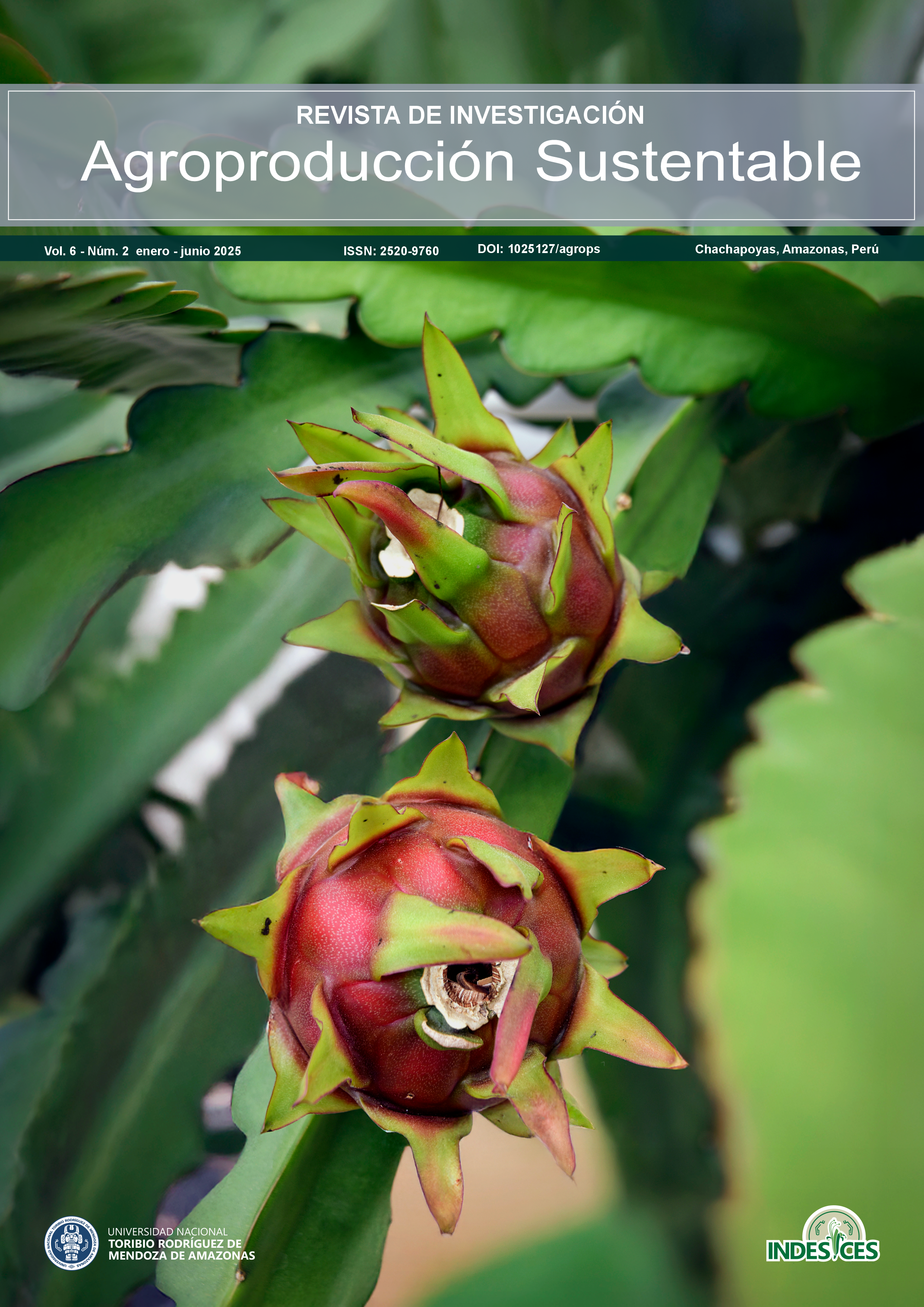Comparative evaluation of tomato and lettuce cultivation under various substrates and hydroponic conditions in Peru
DOI:
https://doi.org/10.25127/agrops.20252.1079Palabras clave:
agricultural biotechnology, hydroponics , sustainable production, protected cultivation, lowland rainforestResumen
The research evaluated the impact of different substrates on the hydroponic production of tomato (Solanum lycopersicum var. 'Rio Grande') and lettuce (Lactuca sativa var. 'White Boston' and 'Azirca') in the greenhouse of the Instituto de Educación Superior Tecnológico Público “Santa María de Nieva - Fe y Alegría 74”. Two independent experiments were conducted in a medium-technology greenhouse. In the first, tomato was grown using three treatments: agricultural soil, coconut fiber with nutrient irrigation and a soilless hydroponic system. In the second, two lettuce varieties were grown using a NFT hydroponic system with standardized management practices. Plant height, number of flowers, fruit weight, number of leaves, root length and fresh biomass were measured and analyzed. The results of the first experiment indicated that tomato plants grown in a hydroponic system without substrate (T2) reached the greatest height (140.45 cm) and produced the highest number of flowers (28 ± 7.81 flowers/plant). However, fruit weight was higher in the treatment with coconut fiber and nutrient irrigation (T1), with an average of 68.43 g. In the second experiment, Azirka lettuce presented the greatest height with 22.87 ± 3.01cm, while White Boston lettuce showed greater root length (14.45 cm), greater average number of leaves (17.22), and greater fresh weight (117.40 g). These results highlight the importance of selecting adequate substrates and hydroponic systems to improve agronomic performance, which is particularly relevant in areas with limiting soil conditions. The research contributes to developing sustainable production systems in the Peruvian Amazon.
Keywords: agricultural biotechnology, hydroponics, sustainable production, protected cultivation, lowland rainforest.
Descargas
Publicado
Número
Sección
Licencia
Derechos de autor 2025 Gim Keith Vilchez García, Elder Jhony Huajuyat Gonzales, Leyter Ludim Puancha Mariaco, Max Osiel Paati Ampam, Marli Jempekit Wajai

Esta obra está bajo una licencia internacional Creative Commons Atribución-NoComercial-CompartirIgual 4.0.
Aquellos autores/as que tengan publicaciones con esta revista, aceptan los términos siguientes:
- Los autores/as conservarán sus derechos de autor y garantizarán a la revista el derecho de primera publicación de su obra, el cuál estará simultáneamente sujeto a la Licencia de reconocimiento de Creative Commons. Por tanto:
Usted es libre de:
- Compartir — copiar y redistribuir el material en cualquier medio o formato
- Adaptar — remezclar, transformar y construir a partir del material
- La licenciante no puede revocar estas libertades en tanto usted siga los términos de la licencia
Bajo los siguientes términos:
Atribución — Usted debe dar crédito de manera adecuada, brindar un enlace a la licencia, e indicar si se han realizado cambios. Puede hacerlo en cualquier forma razonable, pero no de forma tal que sugiera que usted o su uso tienen el apoyo de la licenciante.
NoComercial — Usted no puede hacer uso del material con propósitos comerciales.
CompartirIgual — Si remezcla, transforma o crea a partir del material, debe distribuir su contribución bajo la lamisma licencia del original.
- No hay restricciones adicionales — No puede aplicar términos legales ni medidas tecnológicas que restrinjan legalmente a otras a hacer cualquier uso permitido por la licencia.
- Los autores/as podrán adoptar otros acuerdos de licencia no exclusiva de distribución de la versión de la obra publicada (p. ej.: depositarla en un archivo telemático institucional o publicarla en un volumen monográfico) siempre que se indique la publicación inicial en esta revista.
- Se permite y recomienda a los autores/as difundir su obra a través de Internet (p. ej.: en archivos telemáticos institucionales o en su página web) antes y durante el proceso de envío, lo cual puede producir intercambios interesantes y aumentar las citas de la obra publicada. (Véase El efecto del acceso abierto).

Esta obra está bajo una Licencia Creative Commons Atribución-NoComercial-CompartirIgual 4.0 Internacional


